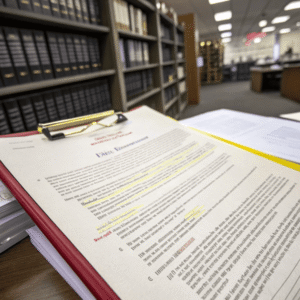When you ask a company or data center toWhen you ask a company or data center[^1] to delete your data, you expect it gone right away. The reality often takes people by surprise.
[^1]: Exploring the role of data centers can provide insights into how your data is stored and managed.
, you expect it gone right away. The reality often takes people by surprise.
Most data centers can erase digital data within a few hours to days, but full deletion—including backups—can take weeks or even months, depending on policies and legal requirements.

Data isn’t just wiped with a single click. It can linger in backups, logs, or archived media. Even after hitting delete, technology, law, and business policies keep data around longer than most people assume. Here’s what really happens behind the scenes when you ask a data center to remove your information.
How long does a company have to delete your data?
People believe their data vanishes instantly after they request deletion. It’s not that simple.
According to most privacy laws like GDPR, companies must honor deletion requests within 30 days, but some exceptions can extend this period, especially for technical or regulatory reasons.

Data deletion timelines depend on both industry rules and company processes. For example, under Europe’s GDPR law, firms get up to 30 days to address most “Data deletion timelines depend on both industry rules and company processes. For example, under Europe’s GDPR law[^1], firms get up to 30 days to address most “right to be forgotten” requests
[^1]: Understanding GDPR is crucial for compliance and effective data management in your organization.
” requests. But deleting sensitive data from live servers, mirrored copies, archived tapes, and backup storage is complex. Below is a breakdown of the key steps and timelines:
| Task | Typical Timeline | Notes |
|---|---|---|
| Delete from live servers | Minutes to 48 hrs | Quickest removal, but not always instant |
| Remove from active backups | Days to weeks | Backups are rotated on pre-set cycles |
| Erasure in archives/logs | Weeks to months | Some copies kept for compliance |
| Final confirmation to user | Within 30 days | Mandated by most privacy regulations |
One time, when I requested my own data be deleted from a large company, they sent a confirmation within 24 hours, but my info lingered in their backups for several more weeks. This lag isn’t negligence—it’s part of a carefully controlled process that balances privacy with operational demands and the law.
How often do data centers need to be cleaned?
Most people think of digital cleaning, but physical cleaning plays a major role in data center security and performance, too.
Data centers are cleaned physically at least once per quarter, with deeper cleans annually. Digital or data purging schedules vary by organization, but physical environment cleanliness is tightly managed.

Physical cleaning is crucial for preventing dust, which can cause overheating or hardware failure[^1]. During my first visit to a top-tier data center, I noticed dedicated staff cleaning floors and racks methodically every week. Here’s a table to separate the two types of cleaning in a data center:
[^1]: Exploring this topic will provide insights into best practices for safeguarding your data center from critical failures.
is crucial for preventing dust, which can cause overheating or hardware failure. During my first visit to a top-tier data center, I noticed dedicated staff cleaning floors and racks methodically every week. Here’s a table to separate the two types of cleaning in a data center:
| Type of Cleaning | Frequency | Purpose |
|---|---|---|
| Physical (floors/air) | Weekly to quarterly | Prevent hardware damage, ensure air flow |
| Deep cleaning | Annually | Remove accumulated dust and debris |
| Data hygiene (digital) | Ongoing/as needed | Purge old or unneeded files, logs |
| Security audits | Annually to monthly | Check for unauthorized or risky data |
Physical cleanliness supports longevity for equipment and reduces fire hazards. Meanwhile, digital cleanliness helps data centers comply with privacy obligations and maintain performance. Both are equally prioritized, though only the first is visible to visitors or employees.
Can data be completely deleted?
You might expect data to vanish forever after deletion, but that view rarely matches reality.
In most cases, data can be deleted from active storage, but traces may remain in backups or logs for weeks or months, making absolute deletion challenging. Special processes, like physical destruction or advanced overwriting, are needed for full erasure.

Deleting data “completely” means removing every trace from every storage device—a goal that’s surprisingly difficult to achieve. If Deleting data “completely” means removing every trace from every storage device[^1]—a goal that’s surprisingly difficult to achieve. If data sits on hard drives, solid-state drives, or tapes, it’s often backed up several times across locations for safety
[^1]: Explore this link to learn effective techniques for complete data deletion, ensuring your sensitive information is truly gone.
, solid-state drives, or tapes, it’s often backed up several times across locations for safety. Even after deletion commands, traces may survive due to snapshots, backup systems, or log files. This is why secure deletion involves several added steps:
| Deletion Approach | Effectiveness | When It's Used |
|---|---|---|
| Standard delete command | Not very effective | For quick fixes, user-level data |
| Secure overwrite (multiple passes) | Good | Compliance, high-sensitivity |
| Cryptographic erasure (destroying keys) | Strong | Encrypted data environments |
| Physical media destruction (shredding, melting) | Absolute | End-of-life, most secure |
For companies handling sensitive data, policy usually requires overwriting storage several times or physically destroying the media. When I managed data for a small project, we thought “delete” was enough, until compliance auditors educated us on certificates of destruction and secure erasure logs. That extra layer of diligence is what truly ensures data can’t ever be accessed again.
Conclusion
Deleting data from a data center involves more than pressing a button—it’s a careful, multi-step process. Regulations, technology, and security policies all determine the final timeline.




